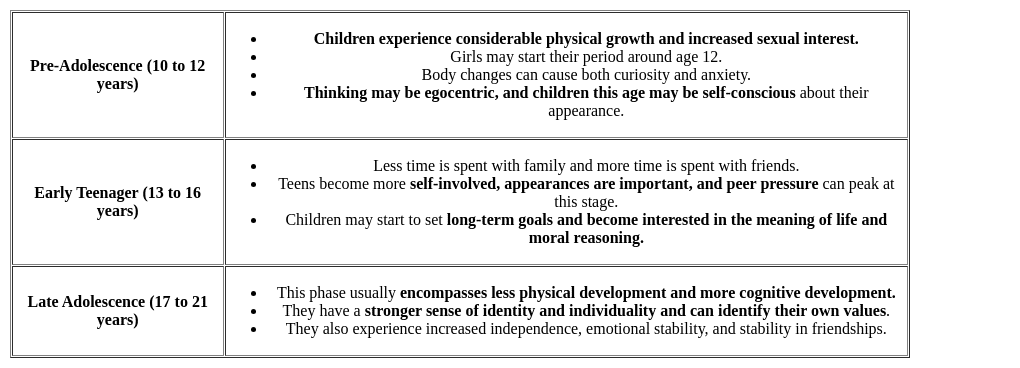KVS TGT Social Science Mock Test - 10 - KVS PGT/TGT/PRT MCQ
30 Questions MCQ Test KVS TGT Exam Mock Test Series 2024 - KVS TGT Social Science Mock Test - 10
Direction: In questions below, choose the word opposite in meaning to the given word.
Safe
निम्नलिखित में 'पृथ्वी' का पर्यायवाची शब्द नहीं है-
| 1 Crore+ students have signed up on EduRev. Have you? Download the App |
'मैं जानती था कि सुमन जरूर नृत्य करेगी ' वाक्य में कौन उपवाक्य है?
Directions to Solve
In each of the following questions find out the alternative which will replace the question mark.
Question -
Race : Fatigue :: Fast : ?
Which of the following is correct syntax in Excel?
You can edit an embedded organization chart object by
Harlock suggested different periods within the adolescent period. Which of the following periods is correctly matched with the average age?
I. Pre-Adolescence - 10 to 12 years
II. Early teenager - 13 to 16 years
III. Late adolescence - 17 to 21 years
Which of the following statements justifies the adoption of the First-past-the-post system for the election of members in Lok Sabha?
1. First-past-the-post system was easier for the voters to understand compared to the system of proportional representation.
2. Proportional representation is unsuitable to the parliamentary government due to its tendency to multiply political parties leading to instability in government.
Which of the above statement/s is/are correct?


















